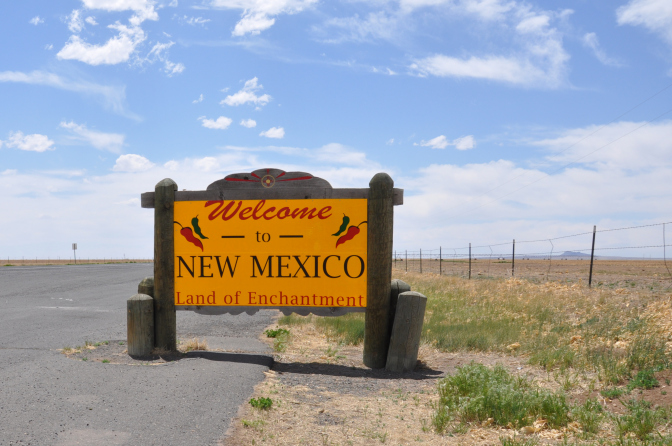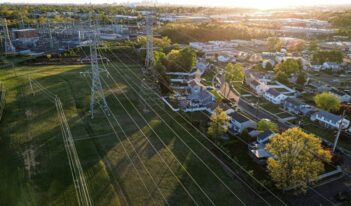
State and local regulators will face challenges in trying to pick up the slack after a federal withdrawal from the Paris Agreement.
In 2005, Martin Chávez won reelection as the mayor of Albuquerque on a platform that included climate action. To pursue his sustainability agenda, Chávez formed a “Green Ribbon Task Force” which identified building energy use as a major opportunity for savings and recommended changing the city’s building code to require more energy efficient hot water heaters and heating, ventilation, and air conditioning (HVAC) equipment. The Task Force led to negotiations between Chávez and city council-members over a new building code that in 2007 imposed more stringent efficiency standards.
In spite of these city leaders’ political commitment and fervor for combatting climate change, the otherwise notable Albuquerque experiment proved a failure in the end as the result of litigation successfully pursued by industry. This outcome should offer a dose of realism to the many state and local leaders who, in the wake of President Trump’s announcement to pull out of the Paris Climate Change Agreement, have expressed their own commitment to combating climate change. The Albuquerque experience offers a vital lesson for today’s subnational leaders and scholars of public administration: success requires more than just meritorious motives; careful legal analysis is needed too.
The policy process does not end once a law has been passed or a regulation has been adopted. In the United States, those who are unhappy with a policy outcome can avail themselves of the courts to seek relief. As a result, public administrators need to assess the possibility of legal challenge and factor litigation risk into their decision-making.
In the Albuquerque case, trade associations for HVAC and water heating products were unhappy with the recommendations of the Green Ribbon Task Force and sued to challenge the new city building code. They saw in the code the seeds of an undesirable patchwork of potentially conflicting rules from one jurisdiction to the next.
Central to their legal case was the issue of whether Albuquerque could—through the creation of its own green building code—effectively override federal law that, since 1992, had imposed different nationwide energy efficiency standards. Industry argued that Congress had expressly preempted state and local governments from regulating the federally covered products—having established initial energy efficiency standards itself and further assigning to the U.S. Department of Energy the responsibility of updating them. Industry contended that the Albuquerque ordinance imposed energy efficiency standards that were more stringent than the federal standards.
A federal district court agreed with industry and issued an injunction against the enforcement of Albuquerque’s standards. The judge wrote:
The City’s goals in enacting Albuquerque’s Energy Conservation Code and the Albuquerque High Performance Buildings Ordinance are laudable. Unfortunately, the drafters of the Code were unaware of the long-standing federal statutes governing the energy efficiency of certain HVAC and water heating products and expressly preempting state regulation of these products when the Code was drafted and, as a result, the Code, as enacted, infringes on an area preempted by federal law.
Albuquerque’s legal loss probably could have been prevented, as a later case involving a Washington State green building code suggested. That later court rejected a similar industry challenge after finding “substantial differences” between the codes in Washington and Albuquerque, indicating the importance of well-crafted legal design.
Industry’s legal victory in Albuquerque resulted in a major setback for an ambitious locality eager to do its part to mitigate climate change at a local level. Much the same prospect could await today’s state and local leaders. After President Trump’s announcement on the Paris Agreement, former New York City Mayor Michael Bloomberg optimistically predicted that, owing to subnational initiatives, “we’re going to do everything America would have done if it had stayed committed.”
Bloomberg could well prove correct. But making serious progress at the state and local level will not come easily. Without careful coordination, subnational climate policies could yield fewer benefits than expected, especially if these policies encourage “leakage” of carbon-intensive industry to less regulated jurisdictions.
Moreover, subnational policies also face legal risk. Businesses that operate across multiple jurisdictions can be expected to complain about a complex patchwork of rules. The Trump Administration itself may seek to defend its national policy of “energy dominance.” Overall, subnational officials can expect one or more of at least six potential legal challenges.
First, even as the Trump Administration retreats from Obama-era climate policies, much federal environmental and energy law will remain on the books and could give rise to challenges like those Albuquerque faced. The Energy Department, for example, continues to regulate HVAC equipment—and those standards have support from industry because they avoid a patchwork quilt of state laws.
Second, subnational climate regulation could raise “dormant” Commerce Clause challenges. Even when no federal law exists to conflict with state or local regulation, subnational rules can be unlawful if their burden on interstate commerce is “clearly excessive in relation to the putative local benefits”—a test the Supreme Court announced in Pike v. Bruce Church, Inc. Legal challenges under Pike are generally hard to win; however, with climate regulation, even cities and states with the greatest environmental susceptibility could find their rules facing legal vulnerability. The marginal benefits of a single local jurisdiction’s requirements on a global environmental problem will necessarily be small.
Third, once the Trump Administration actively withdraws certain federal climate change regulations, the Commerce Clause will no longer be completely “dormant.” Challengers to subnational regulation will likely argue that state and local efforts to fill in the new void are preempted by affirmative federal policy decisions to create such a void—not mere indifference.
Fourth, assuming the Clean Power Plan is rescinded in spite of the likely legal challenges by environmental groups, any subnational regulation of the power sector will likely increase prospects for legal or administrative challenge to utility rate requests prompted by increased regulatory costs. After all, these costs will no longer be mandated by federal law.
Fifth, state automobile emissions regulations depend on a U.S. Environmental Protection Agency (EPA) waiver from federal standards. California has received such a waiver which has allowed other states to adopt California’s more stringent standards. But at his Senate confirmation hearings, EPA Administrator Scott Pruitt expressed a willingness to reconsider California’s waiver—a move the auto industry would presumably support but that will also generate litigation by environmentalists.
Finally, expect to hear the argument that climate policy is foreign policy—and thus is under federal control. Whether this argument will win remains to be seen. For one thing, as our colleague Jean Galbraith insightfully suggests, courts may prefer limits arising under domestic rather than foreign affairs law. But foreign affairs lawsuits seem all the more plausible with each additional climate meeting that California’s Governor Jerry Brown holds with foreign leaders.
With the federal government’s receding role on climate change, subnational governments may offer the only meaningful hope for the United States to make significant policy progress. Although state and local affirmation of the Paris Agreement provides reason for optimism, a necessary condition for success of subnational regulation will be careful attention to larger legal constraints, a hard lesson Albuquerque officials learned nearly a decade ago.
This essay originally appeared in the Public Administration Review’s online symposium on Climate Change and Public Administration. The authors thank Nives Dolšak and Aseem Prakash for organizing the symposium and for their helpful edits to an earlier version of this essay.
This essay is part of a five-part series, entitled State and Local Regulation of Climate Change.





